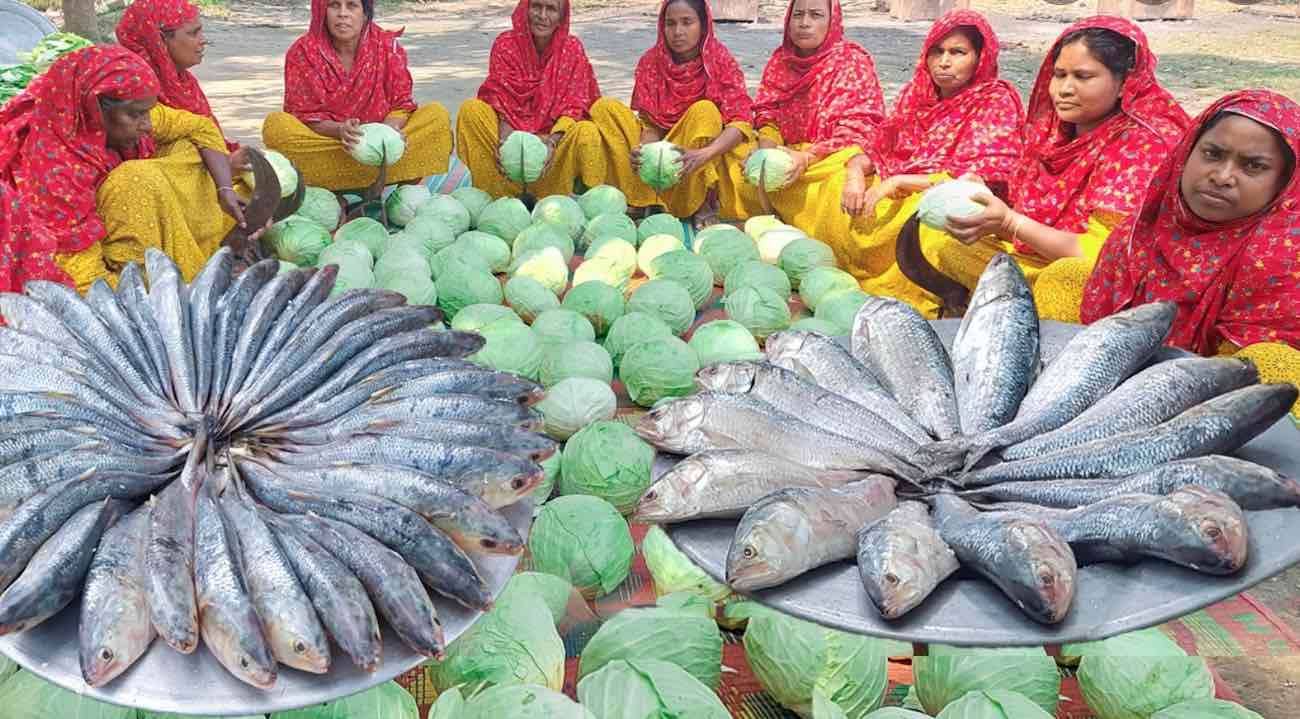Baby Has the Sweetest Reaction to Gift From His Auntie - WATCH
An adorable baby got the perfect present from his auntie. Watch the sweet reaction to seeing her photo on a blanket.

South Asian villagers are discovering that the world has an insatiable appetite for YouTube cooking shows-especially when the chefs are making food for an entire village.
YouTube channels like Village Food Secrets (with 3.5 million subscribers) and Village Cooking Channel (15 million) are garnering billions of views.
The advent of these "oddly satisfying" niche videos, featuring teams of men and women preparing gargantuan feasts, are transforming rural village economies-creating employment and building entrepreneurial, as well as technological, skills among the participants.
Because meal time is often about connecting with people as much as it is about receiving nutrients, the advent of growing internet access in Bangladesh gave people a different kind of opportunity for interpersonal connection.
Take Delwar Hussein, the creator of AroundMeBD social channels (BD stands for Bangladesh). He now employs 50 people to make videos of his neighbors in Shilmuria preparing huge meals, like a 650-pound water buffalo, a 140-pound fried tilapia curry, or a 320-pound vegetable hodgepodge-which are then served to hundreds of children and adults.
As with most of the poorest parts of the world, high-speed internet access is often obtainable only through the nearly-ubiquitous internet café.
Every week, Hussein takes a 6-12 hour bus from the village of Shilmuria to the capital city of Dhaka, where he uses the café run by his nephew and business partner, Liton Ali Khan, to edit and upload the footage of the colossal meals.
It wasn't always food, but rather the noisy and colorful streets of Dhaka where Khan and Hussein launched their media empire, which now consists of 6 YouTube channels with a combined total of more than 5 million subscribers. It was Khan originally who filmed wet markets and colorful garment districts, managing to generate 20,000 subscribers before switching to the idea of food.
"At first we thought of it as a picnic, like we will cook and eat the food and make videos about it," Hussain told Rest of World. "We never anticipated that these videos would be able to generate millions of views in such a short period of time."
The massiveness of the dishes is meant to depict the generosity of rural life. As more ad revenue came in through the channel, the budget allowed for the expense of acquiring large game species to feed even neighboring villages. Around $3,500 is spent every month on fish alone, and another $175 for transporting the food to the village.
They were able to buy the video crew several cameras, a panoramic drone, and enough revenue to provided for 50 employees, 17 of whom are women. Furthermore, the proceeds help pay for medical care for the grandmas and grandpas who do the cooking, and in the case of a forest fire, repair and replace damaged homes.
"You know lots of people from different parts of the country as well as from abroad now come to see our activities," Hussain said. "We have plans to build a gate to mark the entrance of our village and to install several wooden planks - indicating the direction towards our village - on the way from Khoksha, so that people have no difficulty finding us."
A friendly warning before scanning these food channels: Some of the videos involving meat can be shocking if you've never seen such things. These are not wealthy people, and processing is done, normally, by a team of ladies in pink, by hand, on a tarp, with whatever's available.
PULL Up A Chair For Your Friends on Social Media to Attend a Village Meal…
Be the first to comment